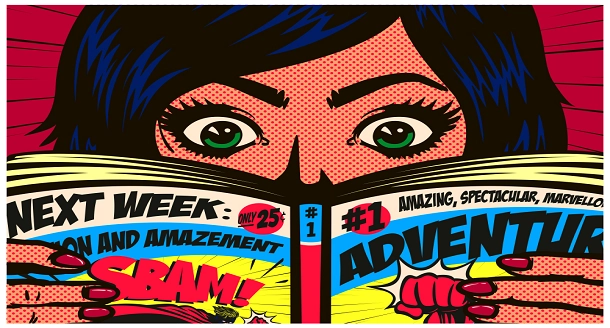
Benefits of Reading Educational Comics. Comics are beneficial to people who have reading disabilities, like dyslexia. They are easier to understand, as there are more drawings, and they also give the reader a sense of accomplishment. This can be a great incentive for reluctant readers to read more difficult books. They are also much less expensive than traditional textbooks.
Less expensive than traditional textbooks
Despite their popularity, print textbooks are not free. The College Board found that students spend more than $1,200 on school supplies and textbooks each year, more than three times what they spent twenty years ago. This amount represents a large portion of a college student’s income. Many students find that these costs affect their ability to succeed in class. Fortunately, there are several options for students who want to save money on textbooks.
Choosing a digital textbook is a great option for students who are looking for a lower-cost textbook option. Educational Comics contain the same information, a digital textbook can have multimedia, self-tutoring, and other features that make it more user-friendly and personalized. Some digital textbooks even feature games.
Easy to read
Comics have a powerful ability to engage young people and stimulate their verbal and visual literacy. However, many educators have been wary of teaching comics. They perceive them as lower-level texts, and may even be uncomfortable confronting materials that challenge the establishment. Fortunately, there are resources and techniques that educators can use to introduce comics into the classroom.
The Dekko comic series is a great example of an easy-to-read educational comic also helpful to choose a dissertation in education topics. This series features stories about beloved characters in the modern world while incorporating historical and fantasy elements. The comics also have colour-coded legends that make it easy for students to pick out the important content. These comics have been tested in six schools and were found to be fun to read and clear to understand.
Engaging reluctant readers
Graphic novels are a fantastic way to get reluctant readers to read. They are longer stories written in comic-book style, and many are geared toward young audiences. Reading experts are discovering that they can be an excellent tool for turning around reluctant readers. And there are many ways to use comic books in the classroom.
Graphic novels provide students with a challenging and modern text that they can relate to, while also challenging them to do analytical work. However, it is important to remember that visual texts do not automatically engage reluctant readers, and teachers should not assume that struggling students will be more engaged by reading a comic. These types of texts do not come without productive struggle and may even be counter-productive.
Educational comics are Easy to teach
Educational comics are a great way to engage children in the learning process. These stories combine text and pictures to tell a story. The combination of text and pictures allows children to develop their imagination. Teachers can use comics to engage different learners, including ESL learners and special needs students. In addition, teachers can create a class comic collection and have a wide variety of comics available for the class to read.
Educational comics are helpful for students learning. They engage students in their own literary form, combining images with text to convey a point of view, drama, humour, and satire. In addition, students are more likely to retain information when they are reading a comic than if they were reading text alone.
No “graphic” storylines
In the past few years, the number of kids reading comic books has increased dramatically. Although some educators and parents might dismiss them as “junk,” it is important to remember that children are naturally drawn to visual media, including comics. And while not all comic books feature “graphic” storylines, they can be an excellent learning tool for children. Popular Shakespearean plays, for example, have been adapted into graphic novels.
For young readers, graphic novels can help them understand historical events and figure out the context for what they are reading. Graphic novels offer an opportunity to connect with the people involved in important events that shaped history. In addition, the visual elements are incredibly engaging for young readers, and they can provide contextual support for students who aren’t yet confident readers.
Author Bio
Jesse Pinkman is a research-based content writer, who works for Cognizantt, a globally recognised wordpress development agency uk and Research Prospect, a Tjenester til at skrive afhandlinger og essays. Jesse Pinkman holds a PhD degree in mass communication. He loves to express his views on a range of issues including education, technology, and more.

